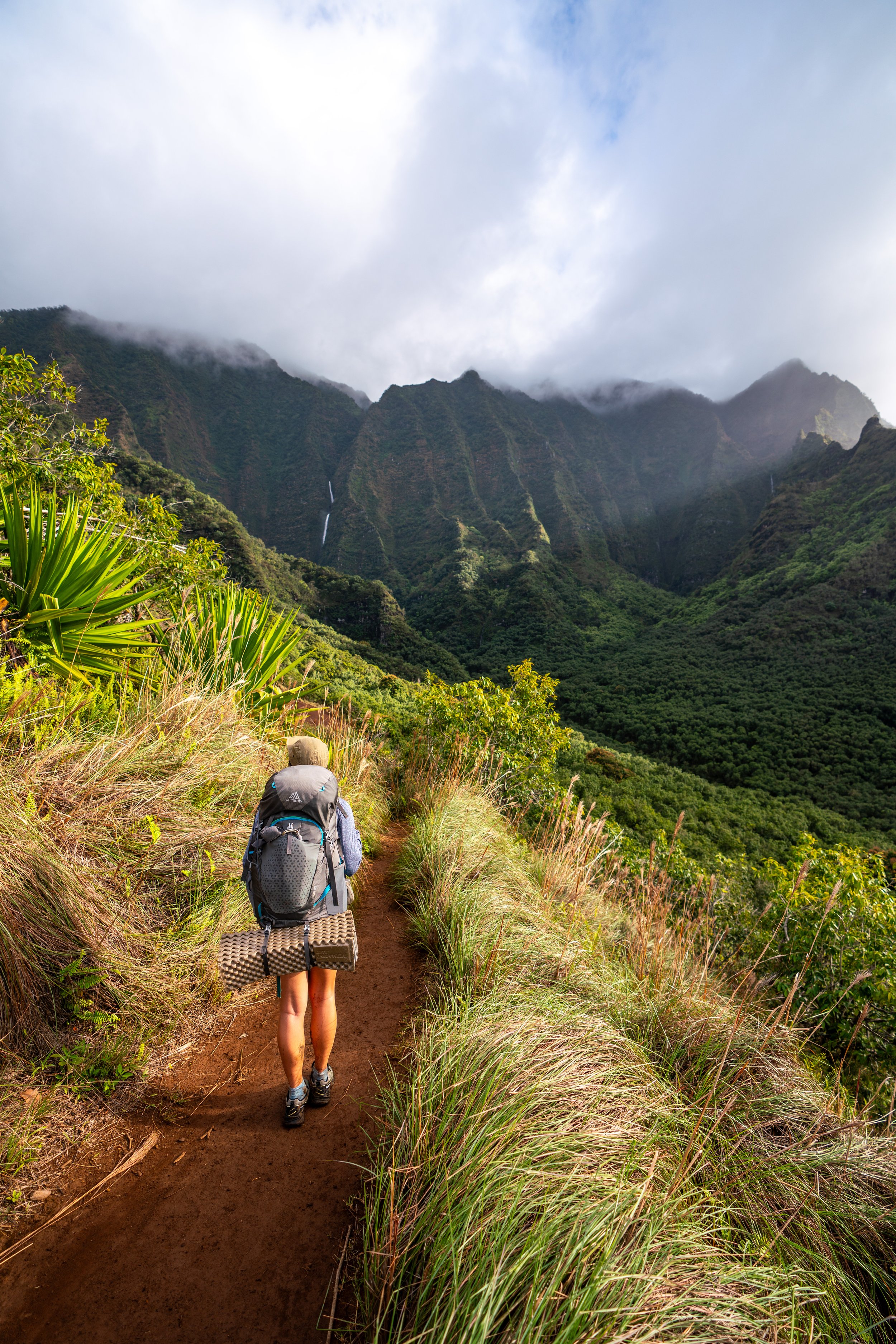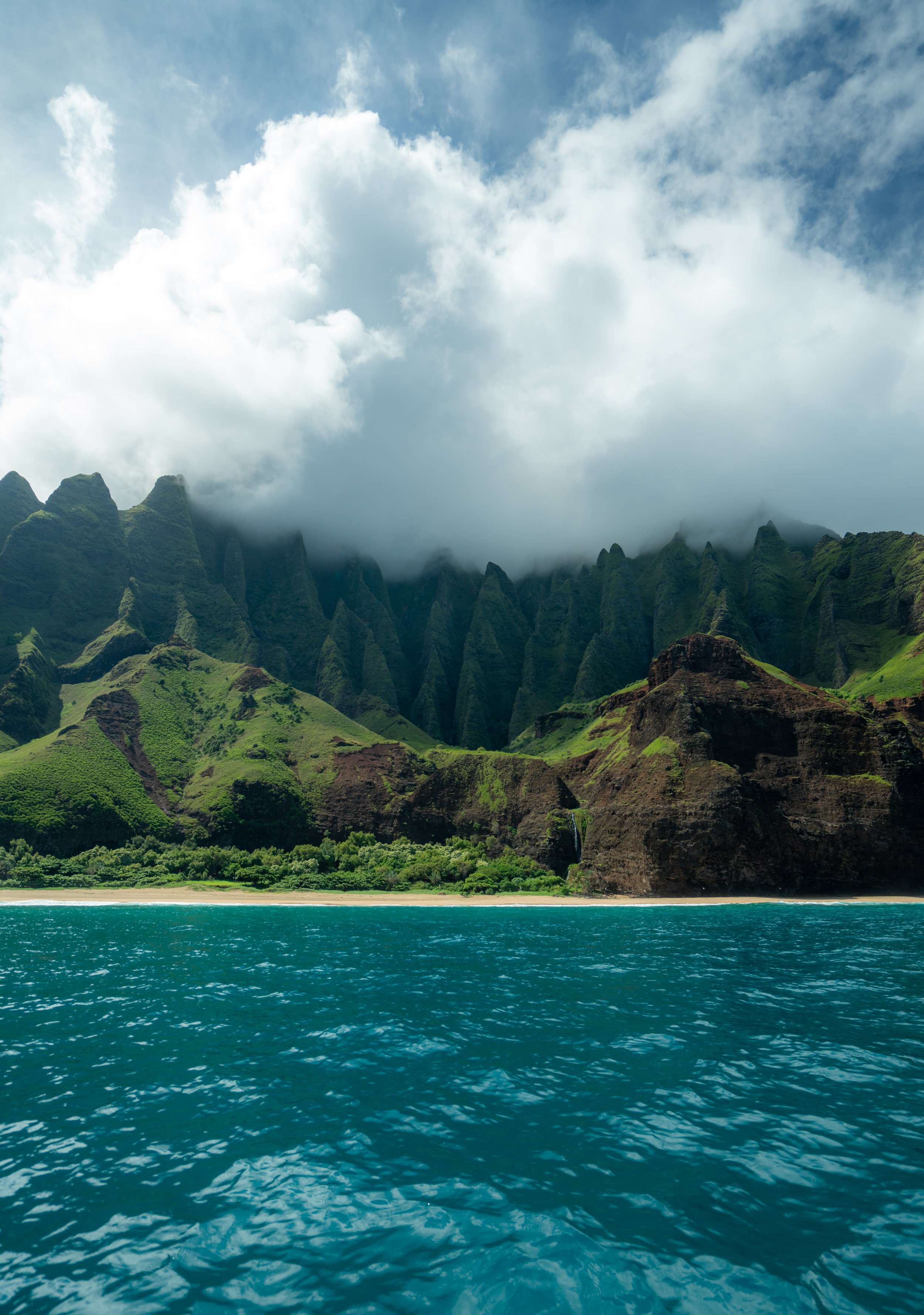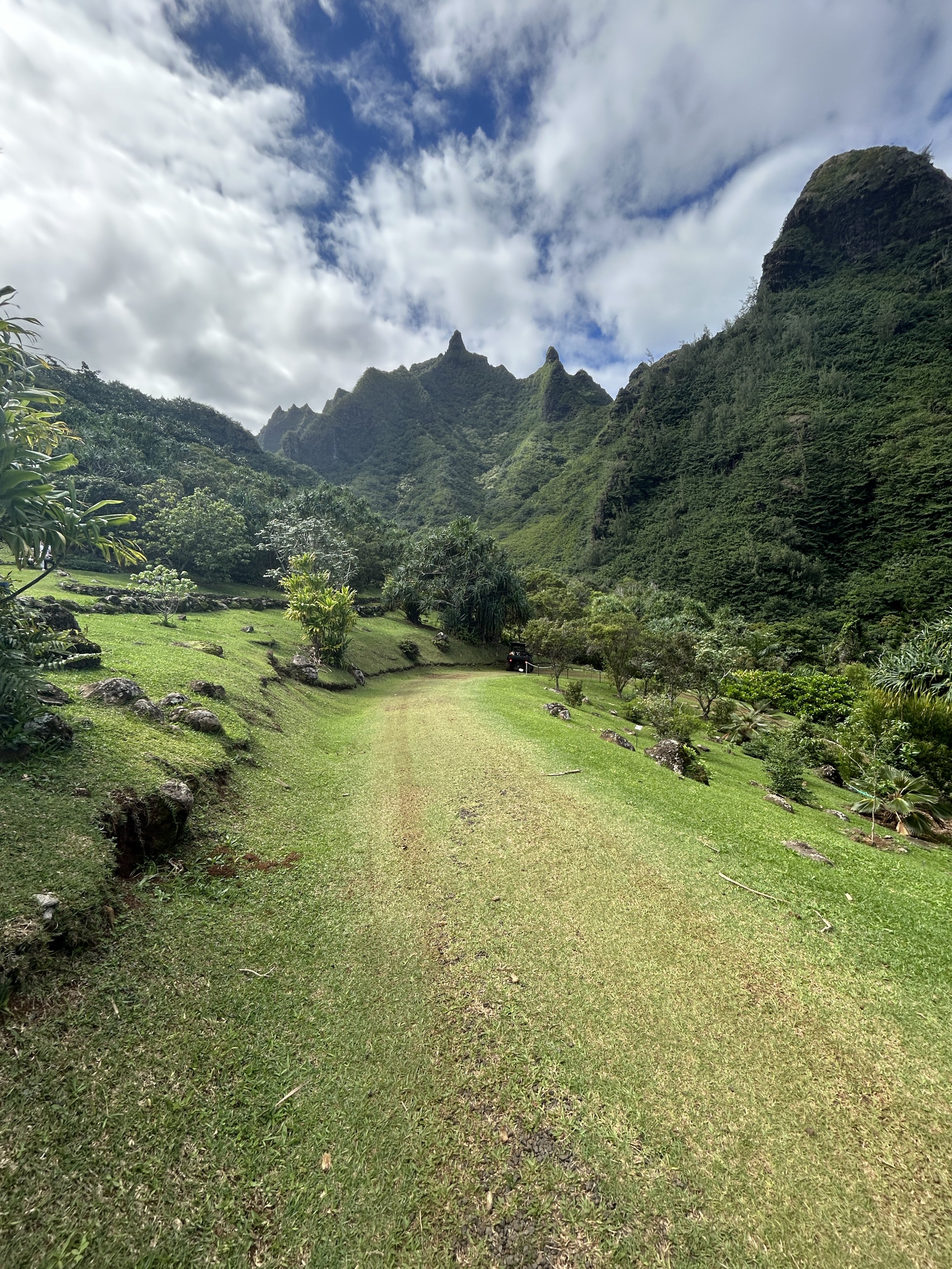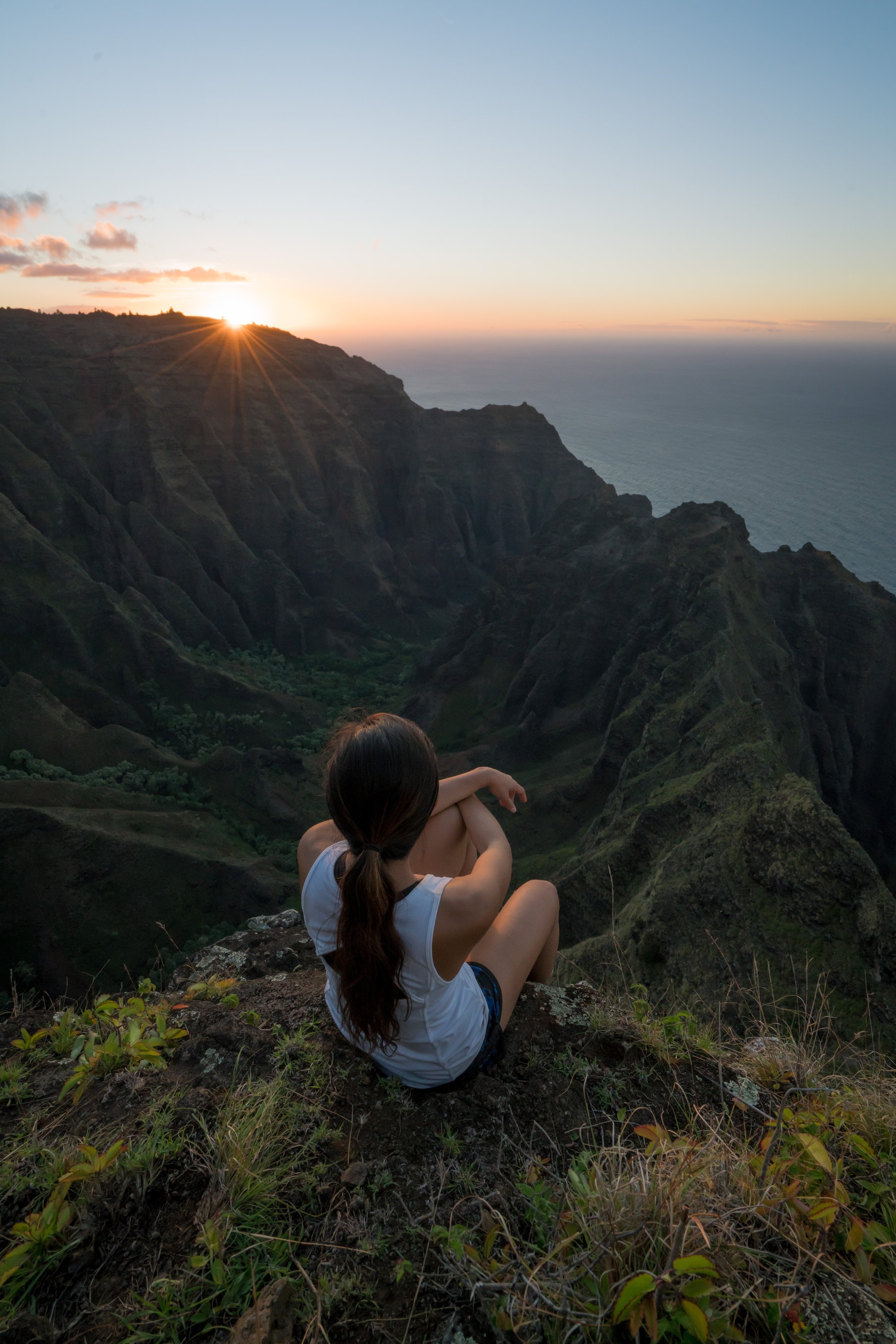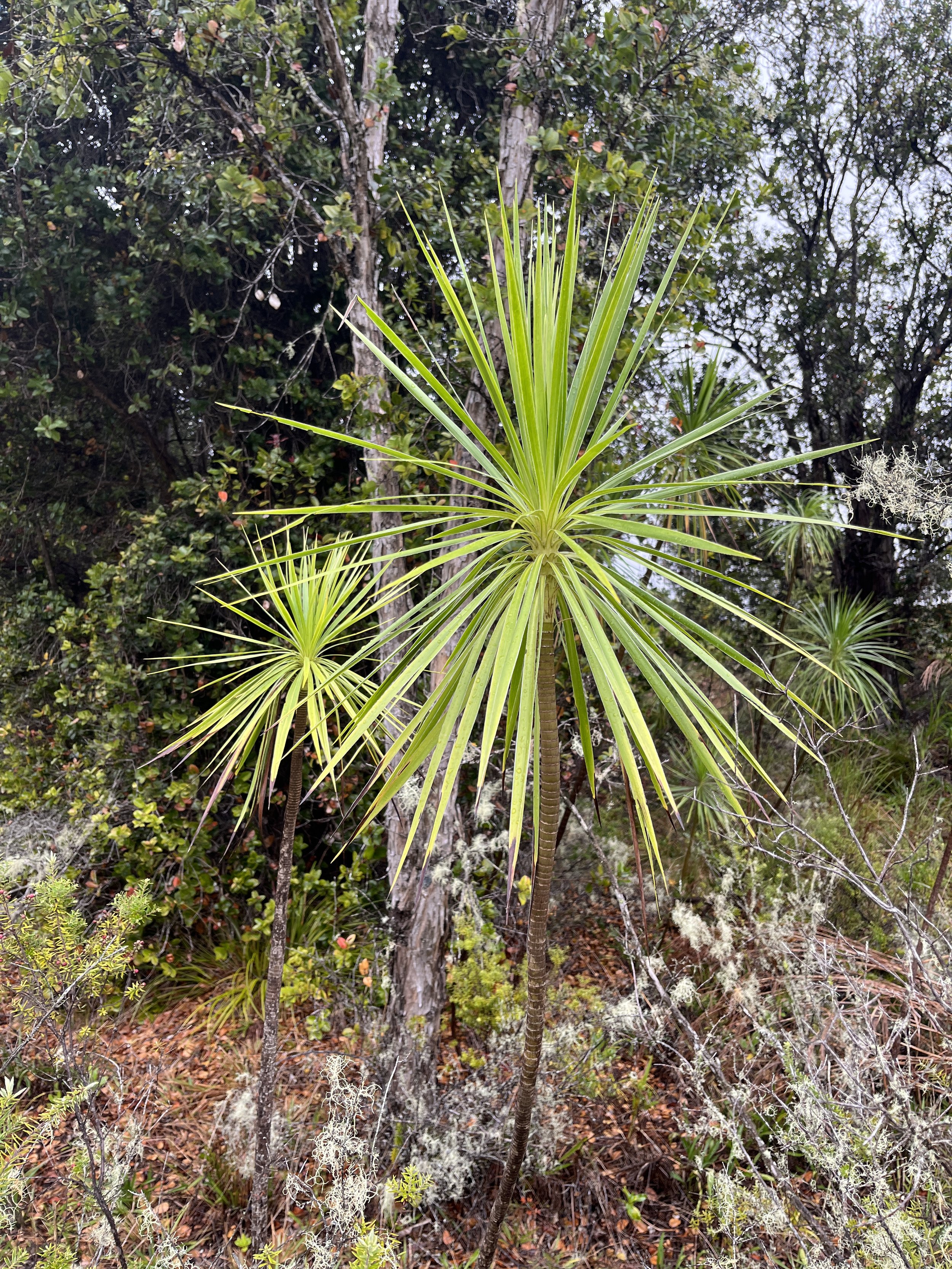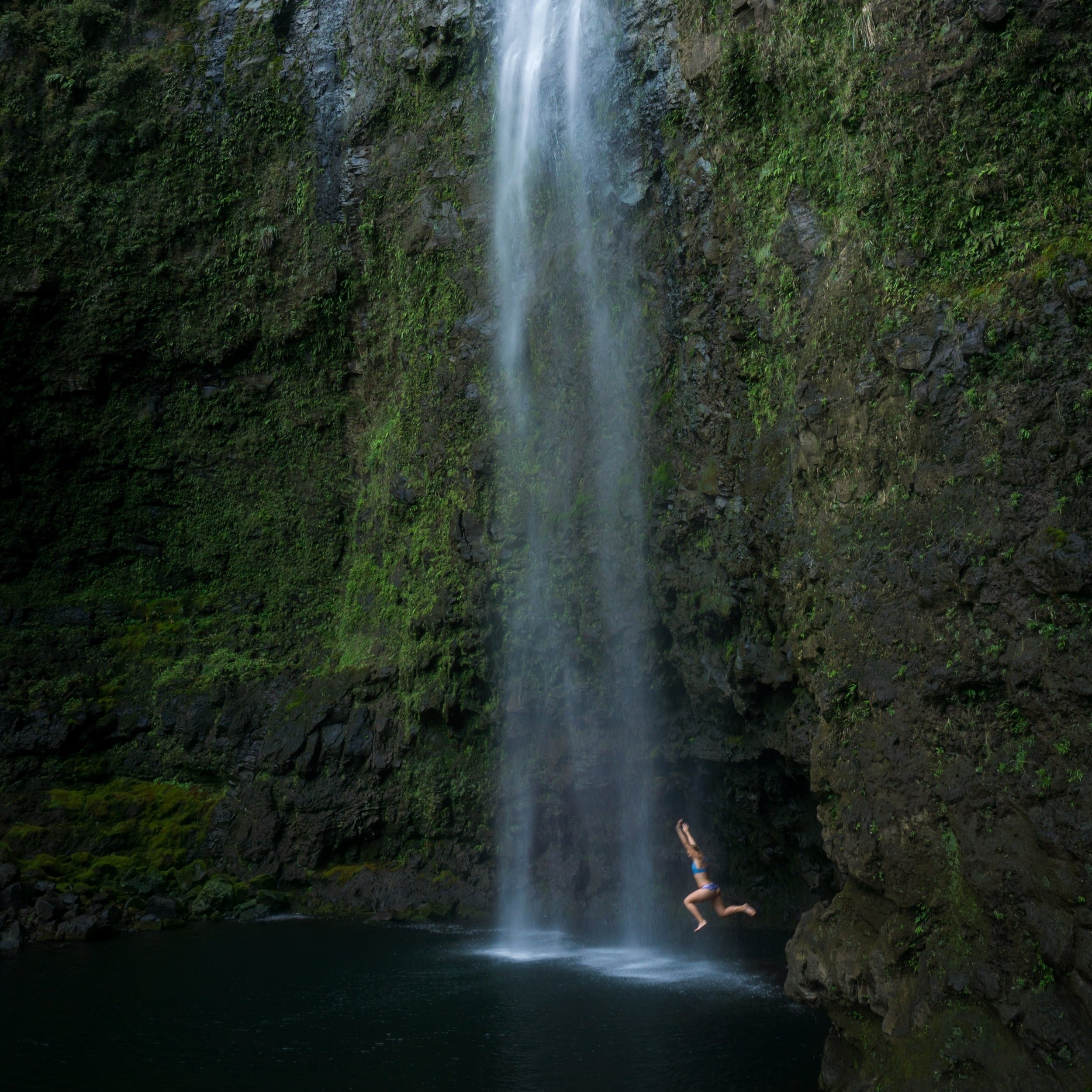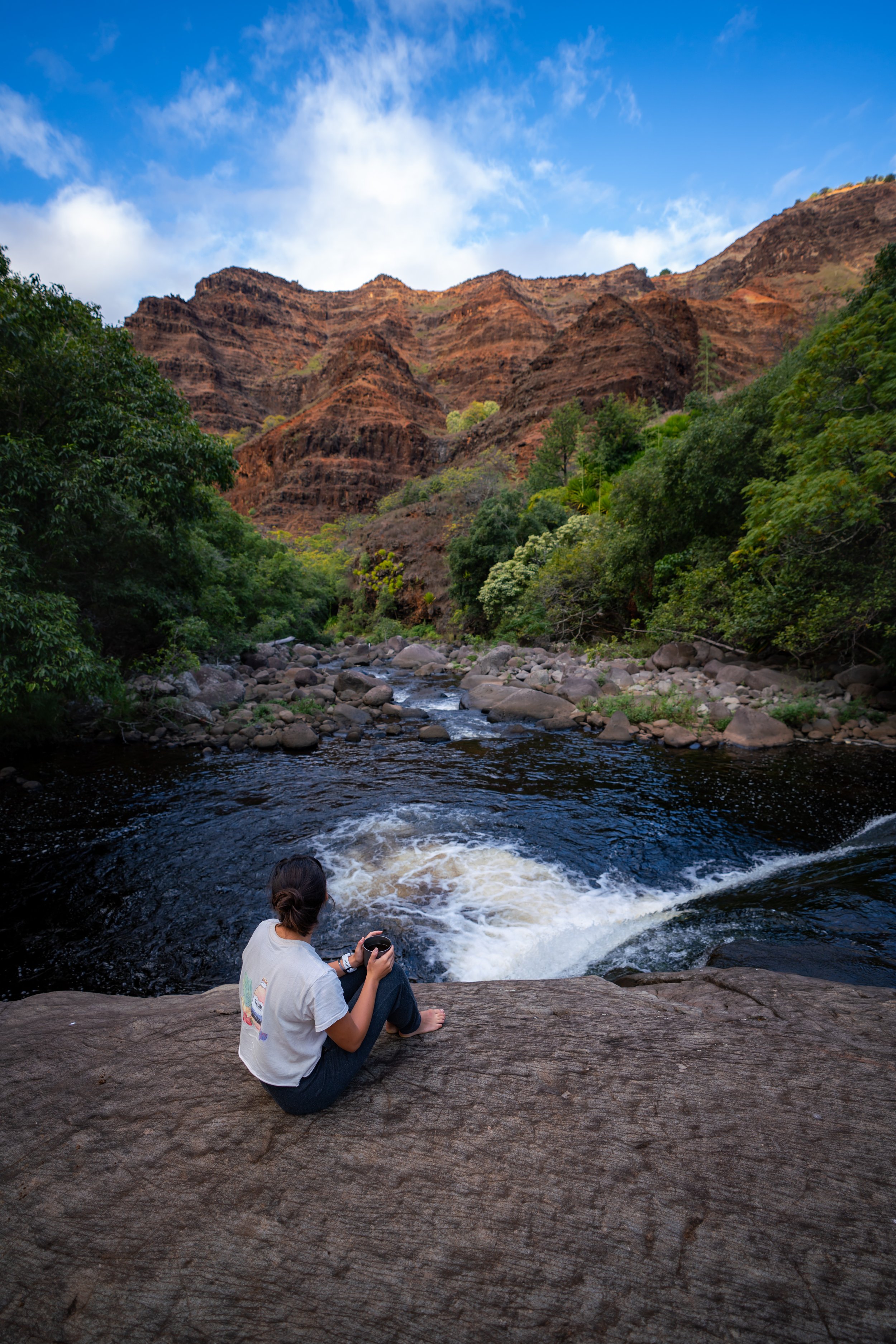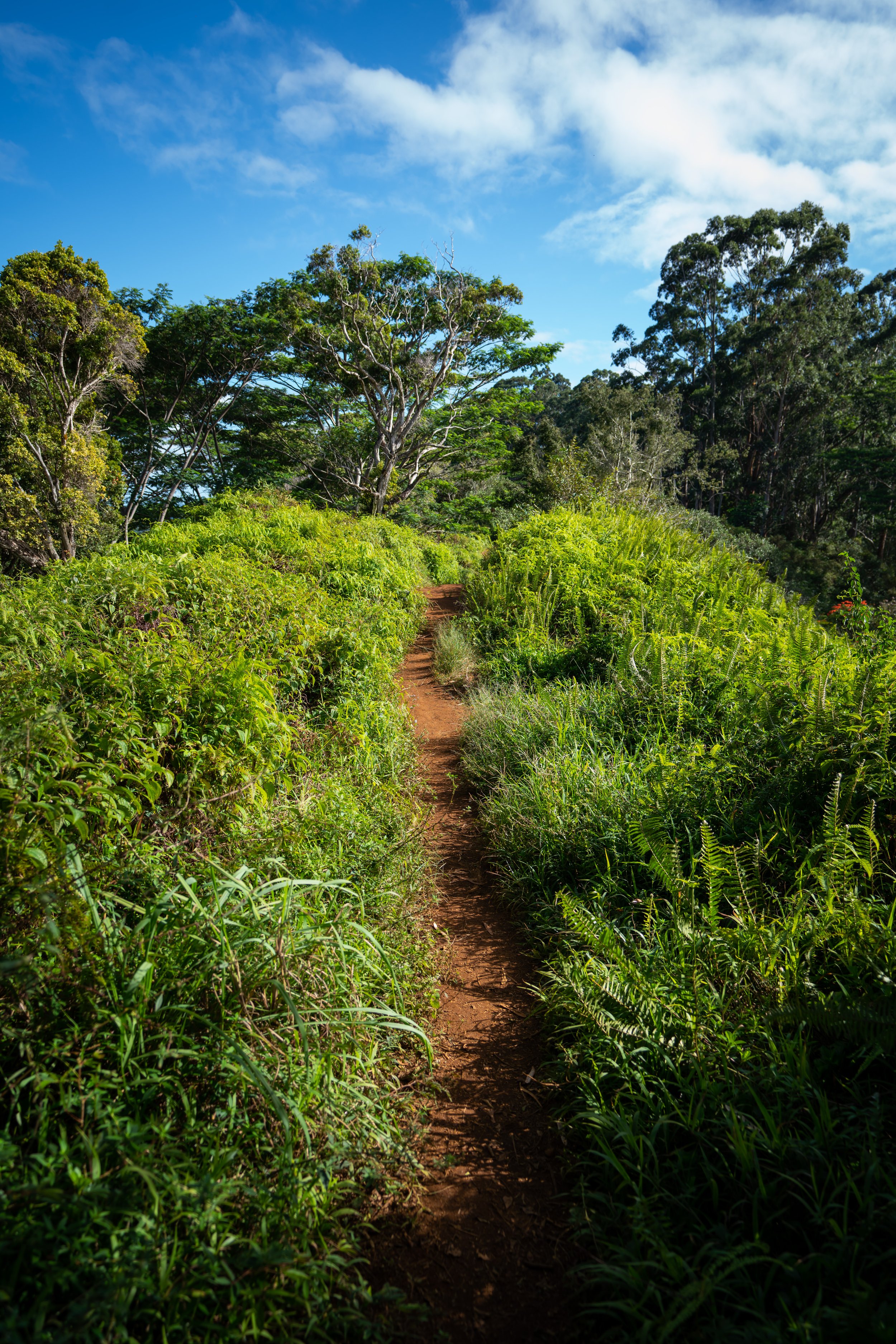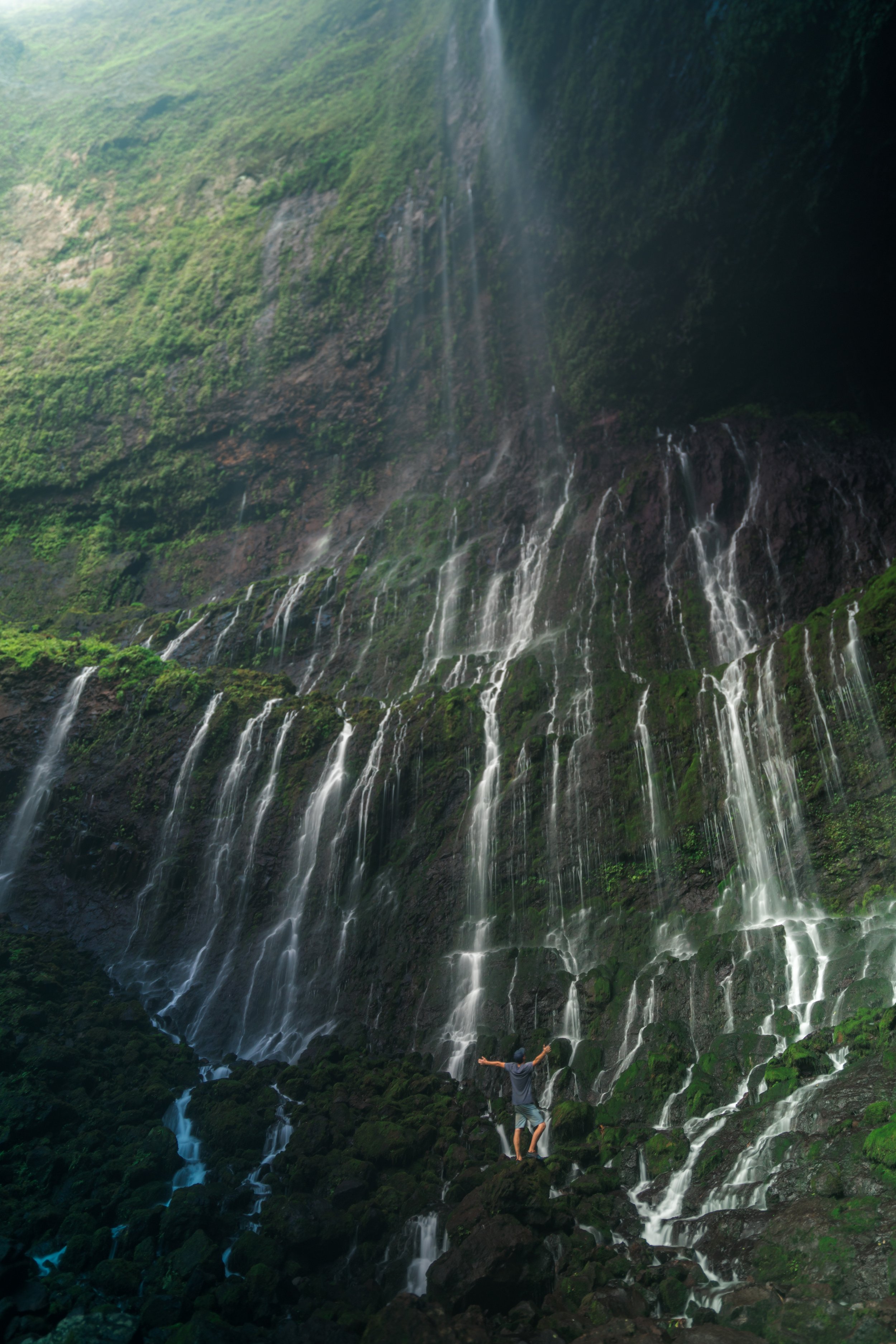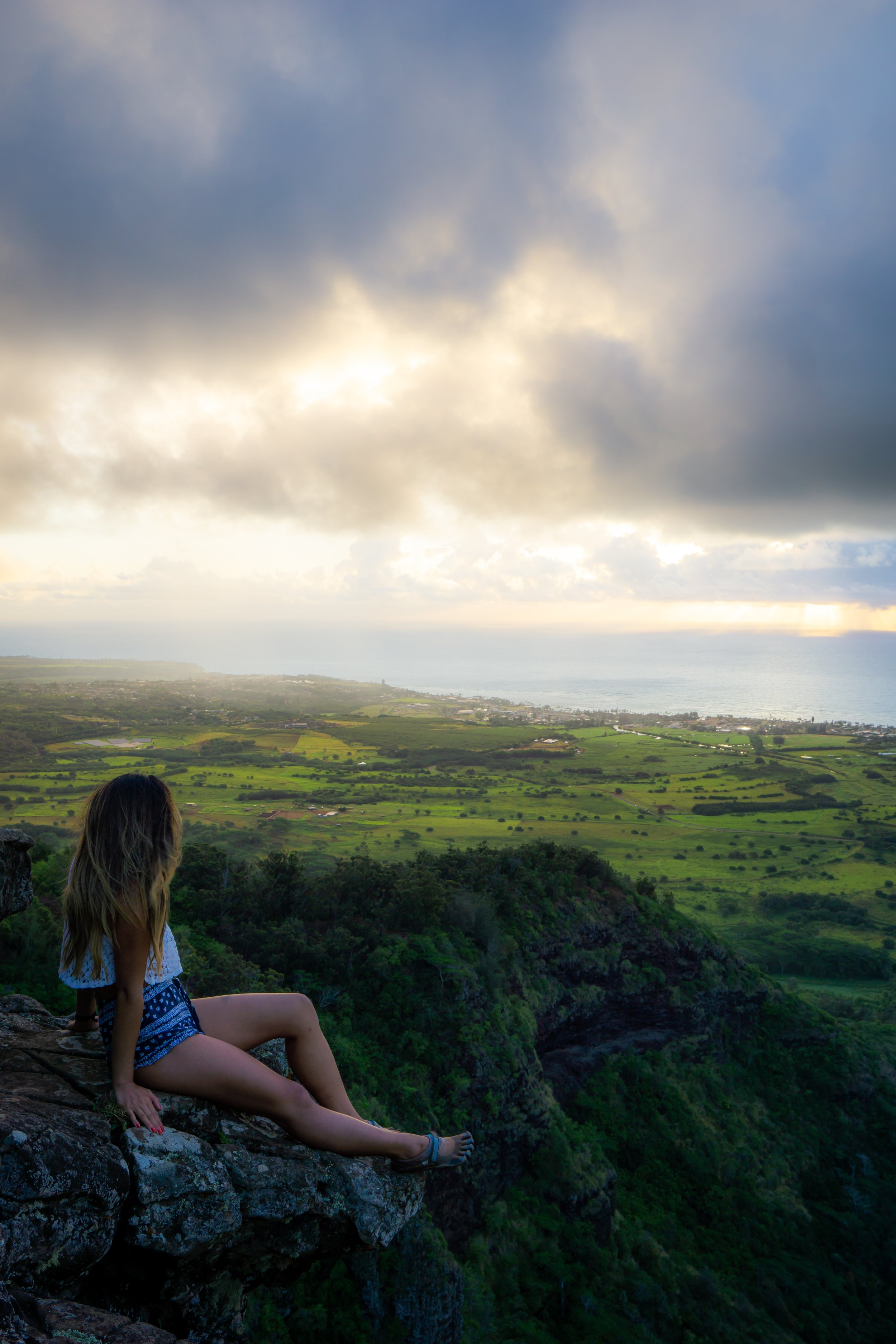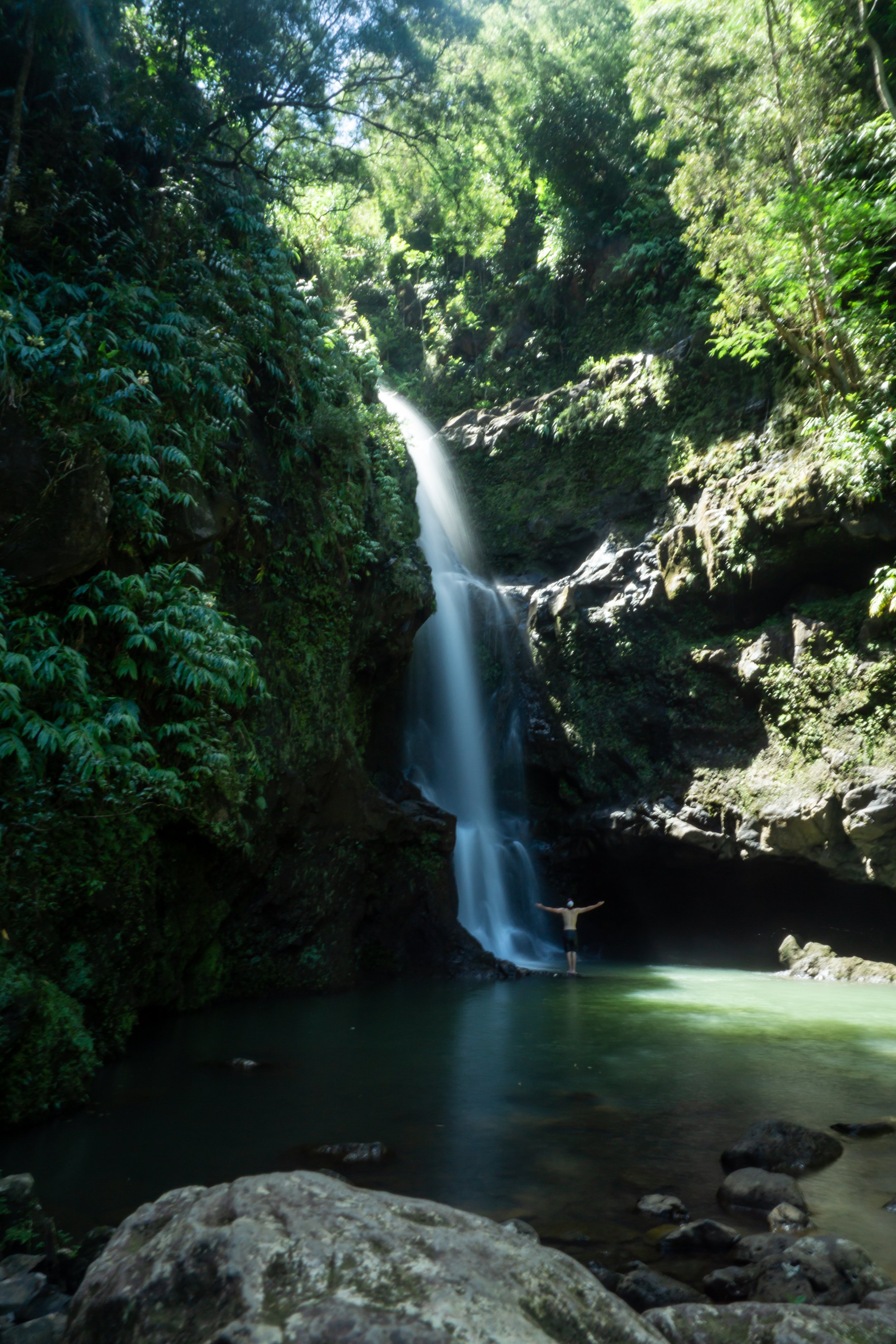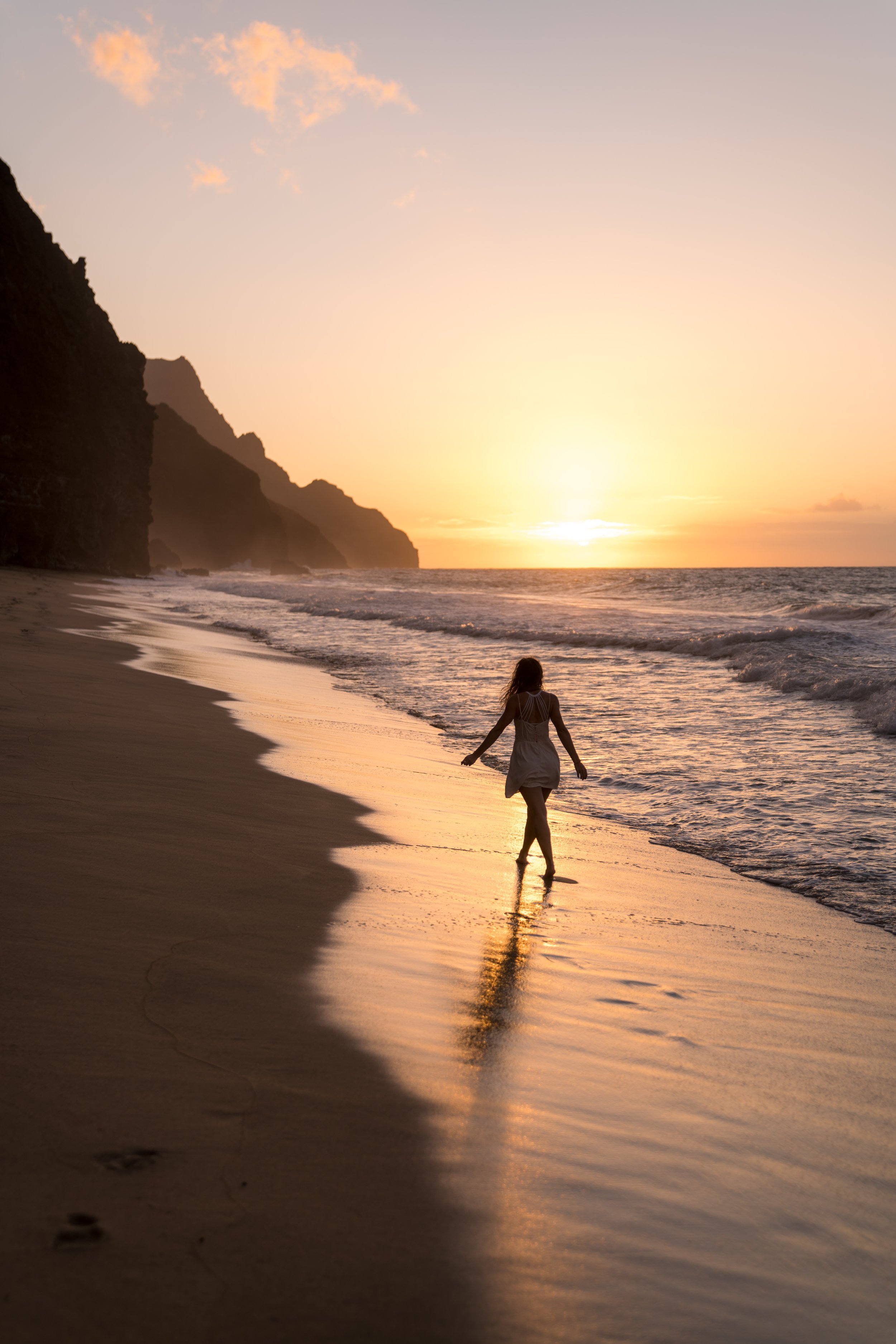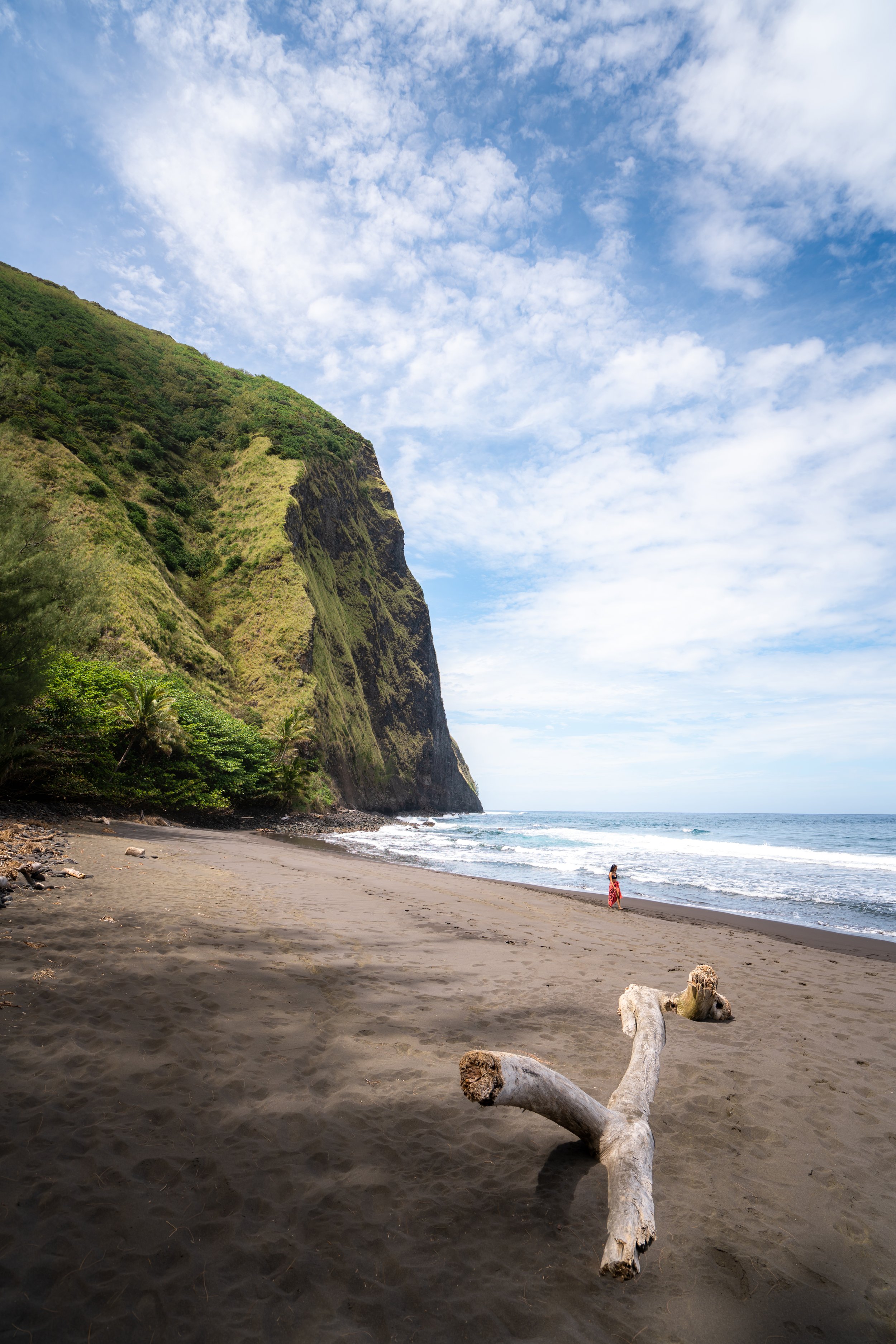Hiking the West Sleeping Giant Trail (Nounou Mountain) on Kauaʻi, Hawaiʻi
Distance: 2.2 miles / 3.5 km
Elevation Gain: ~760 ft. / 232 m
The West Sleeping Giant Trail on Kauaʻi, also called Nounou Mountain, is a local favorite for different reasons than those of the East Sleeping Giant Trail, as the hike through the lower forest is much more beautiful in comparison.
By this, I mean that Nounou Mountain is a favorite for both locals and visitors alike, as either trail to the summit makes for a great sunrise adventure.
However, the West Sleeping Giant Trail is generally loved more for its uniquely beautiful Cook Pine tree tunnel at the beginning of the hike!
For this reason, and because parking is easier for the West Nounou Mountain Trail, I personally prefer and recommend hiking the West Sleeping Giant Trail over the east!
East vs. West Sleeping Giant Trail (Nounou)
East Sleeping Giant Trail
Simply put, the East Sleeping Giant Trail is the harder of the two trails up Nounou.
This is because it’s longer, there’s more elevation gain, and there’s one additional area that requires some scrambling/climbing that the West Sleeping Giant Trail doesn’t have.
West Sleeping Giant Trail
The one thing that sets the west trail apart from the east is that the West Sleeping Giant Trail will almost always be muddier after it has recently rained.
Nevertheless, the West Nounou Trail is my personal favorite between the two because the Cook Pine forest in the lower elevations of the hike makes the trail prettier overall.
Read My Separate Post: East Sleeping Giant Trail
West Sleeping Giant Trailhead Parking
Parking for the West Sleeping Giant Trail is located at one of three different trailheads: the very end of Lokelani Road, the very end of Crossley Road, or along Kamalu Road in Wailua, with Lokelani being the closest of the three.
That being said, the West Sleeping Giant Trailhead parking is typically less competitive than the East because hikers have the ability to choose between any one of these three areas to find parking.
Google Maps Directions: Lokelani Trailhead / Crossley Trailhead / Kamalu Road
My Hawaiʻi Hiking Checklist
Osprey 3L Water Bladder - The Osprey 3L water bladder is the most universal hiking and backpacking water bladder on the market, and it’s my go-to because of the slide-off seal that allows it to be quickly filled from the top. Additionally, individual parts are easily replaceable, such as the bite valve.
Blister / Heel Protectors - I swear by these cheap, amazing heel protectors to prevent blisters for nearly every kind of hiking and backpacking that I do!
Black Diamond Headlamp - Personally, I recommend the Black Diamond Storm because it is one of the brightest, lightest, and longest-lasting headlamps on the market—and trust me, the weight-to-battery-life ratio really does matter!
Hiking / Trail Running Shoes - Depending on the type of trail, I prefer to use either the Keen Targhee for longer, more rugged hiking or the HOKA Zinal Trail-Running Shoe for lighter, less intense trails. In either case, both have been amazing to me for many years across countless environments, and both can be found in men’s and women’s sizes. - (Men’s Keen / Women’s Keen) (Men’s HOKA / Women’s HOKA)
Waterproof Rain Shell - You never know when it may rain, and I’ve learned over the years that a rain shell is far better than a rain jacket. By this, I mean that it’s best to have something that the water will roll right off of, which is why I recommend the Patagonia Torrentshell 3L available in both men’s and women’s sizes.
High SPF Sunscreen - Packing high-SPF sunscreen is a must for long days outside!
Hiking the West Sleeping Giant Trail
Regardless of which trailhead you choose to begin, the West Sleeping Giant Trail begins on a flat, open path between some houses before entering the forest.
That being said, please be quiet and respectful around the houses, especially if you’re going to hike Nounou Mountain for sunrise!
Once the trail enters the forest, expect the hike to be much muddier or as dry as the photos you see here.
Nounou-Kuamoʻo Trail Junction
When the Nounou Trail meets the Kuamoʻo Trail, go left up the the hill through the Cook Pine trees.
East-West Sleeping Giant Junction
Eventually, the Wast Sleeping Giant Trail meets with the trail coming up from the east side.
Here, go right at this split to continue up to the summit of Nounou Mountain.
Read My Separate Post: East Sleeping Giant Trail
Nounou Shelter
Next, the Nounou Shelter will be shortly after the East-West junction, and it’s a good indicator that you’re hiking in the right direction.
From the shelter, the Sleeping Giant Trail continues straight across the open clearing.
Then, just before the Nounou Summit Ridge, there is another section to climb in order to continue higher.
That being said, there are plenty of good points of contact to do it safely, as long as you take your time.
Nounou Summit Ridge
Once above the scramble in the photos above, the remaining hike to the top is much easier than everything it took to get to this point.
On a different note, sunrise on Sleeping Giant is actually better on the summit ridge leading up to the summit than on the summit itself, which has a better view to the west than the east.
Puʻu Nounou (Nounou Mountain)
The summit of Sleeping Giant, more commonly known as Nounou Mountain, is about 1,241 ft. (378 m) and stands high above Līhuʻe, Kapaʻa, and Wailua as a free-standing peak.
This is why it is such a local favorite for sunrise, as views from nearly all sides of the upper mountain are unobstructed on a clear day!
Native Plants on the Sleeping Giant Trail
Since Nounou is such a low-elevation peak, both Sleeping Giant Trails are dominated by non-native/ invasive species.
That being said, there isn’t much in terms of native plants on either Nounou Mountain Trail, with the exception of a few ʻUhaloa and ʻAʻaliʻi.
If you would like to learn more about these and many other native Hawaiian plants from across the islands, I encourage you to check out my separate post linked below.
Read My Separate Post: Native Hawaiian Plant Guide
More Kauaʻi Adventures
If you’re interested in reading about some more amazing Kauaʻi adventures, check out my separate posts below!
Best Hotels & Vacation Rentals on Kauaʻi
Since the best things to do on Kauaʻi are located on all different sides of the island, I recommend starting your search on VRBO.
You may want to stay some nights in Poʻipū, some nights in Kapaʻa, and even some nights on the beautiful North Shore, but this way you can plan out places to stay and adventures on all different sides of the island!
Best Way to Book Rental Cars!
I travel quite a bit, and I know firsthand that finding a good rental car deal can be a challenge, but that’s why I recommend comparing all of your options with Discover Cars.
In short, Discover Cars is a well-known, reputable business that allows you to search for the best deal across companies, and they have the best full-refund cancellation policy I’ve ever seen, valid up to 72, or sometimes even 48, hours prior to your reservation!
Book Here: Discover Cars
Visiting Other Islands
If you are visiting Kauaʻi or heading to another island, check out some of my personal recommendations for Oʻahu, Maui, Kauaʻi, Molokai, Lānaʻi, and Hawaiʻi Island (Big Island) in these separate posts.
If you’re trying to decide which island is right for your visit, check out my overview about each island in the post below.
Read My Separate Post: What is the Best Hawaiian Island to Visit?
What is the Best Time of Year to Visit Hawaiʻi?
The weather in Hawaiʻi can often appear to be warm and beautiful throughout the year, but in my experience, there is a lot more to consider when planning what time of year to visit the islands, such as what island you are considering, what sides of each island do you plan to stay, what activities are you most interested in, the wildlife, and countless other nuanced variables that can all impact the type of trip you can expect to have.
For these reasons, I highly recommend reading through my separate article to not only understand my thoughts regarding the best time of year to come to Hawaiʻi but also what you need to consider based on the time of year that you plan to visit.
Read My Separate Post: What is the Best Time of Year to Visit Hawaiʻi?
Safety
All hikes in Hawaiʻi should not be compared to trails outside of the islands, and hikers should exercise due caution on every adventure, given that many are extremely dangerous.
By this, I mean that Hawaiʻi is known for hot, humid weather, steep, dramatic, and unstable cliffs, and flash floods, which can occur without warning. Therefore, it is important that you check the local forecast, understand the physical condition of your entire group, and pack sufficient food and water before attempting any adventure.
Disclaimer
All information provided on this blog is for informational purposes only and is not intended to be a substitute for information or advice from qualified professionals or managing agencies.
Noah Lang Photography LLC makes no representations or warranties regarding the accuracy or completeness of the information provided here, and readers should use their own discretion, judgement, and seek professional advice where it is appropriate.
Furthermore, Noah Lang Photography LLC shall not be held responsible for any injuries, lost individuals, or legal issues arising from the use of information provided on this website, and if applicable, the above safety disclaimer should be referenced to provide a generic overview of the risks involved.
All said, the content on this blog is for the sole use of Noah Lang Photography LLC, and unauthorized use or reproduction of this content is strictly prohibited.
Disclosure
This post is not sponsored.
However, some of the links in this post are affiliate links, which means that I may earn a small commission if a purchase is made through one of those links. This commission comes at no additional cost to you, and I only recommend products that I personally use and believe will add value to my readers. Thank you for your support, which enables me to continue creating more!
To read the full privacy policy, click here.

About This Blog
Noah Lang Photography, also known as @noahawaii, is 100% reader-supported!
I do not accept guest articles or sponsored content of any kind on my blog, which is why, if you enjoy the outdoor and travel content I create, please consider buying me a coffee!
I appreciate your support, which helps me continue to keep this blog alive!










